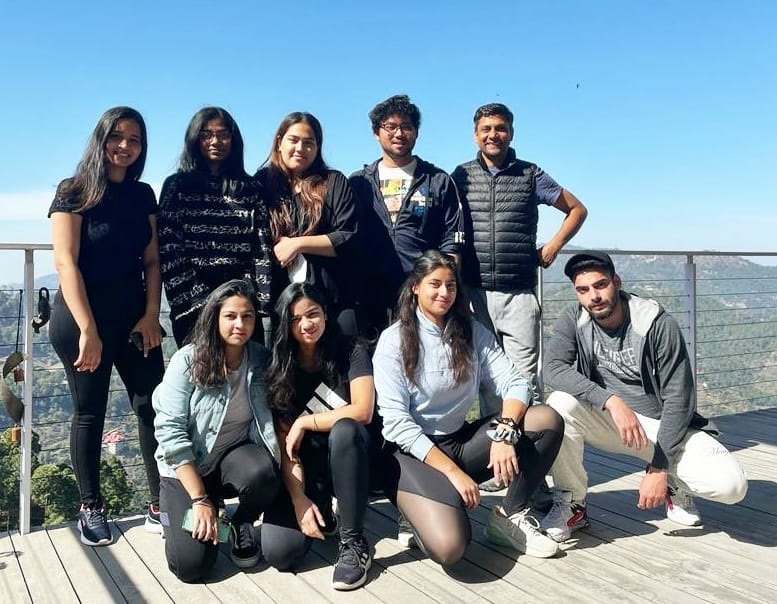
Talking About Life’s Engineering Saga (TALES)’ is a segment that exclusively focuses on the top structural Consultants across the globe sharing their engineering journey in their own words. We have – Abhijeet Kulkarni – sharing his deep knowledge with us…
He has returned to India from the Middle East with an extensive experience and knowledge of two and half decades under his belt and is ready to take the domestic construction industry to new heights… He sees India as a potential hub for structural steel skyscrapers.
Here’s Abhijeet Kulkarni, Country Director – Structures of Buro Happold (BH) India, giving us a candid peak into his immense experience…
Since you have joined Buro Happold, how has been the transition and what are the strengths you have discovered in your new organization?
I have spent about 18 years in the Gulf and then relocated to India back in 2019. The transition has been reasonably smooth. Even though Covid-19 has affected the business here, but otherwise, within the organization, within the general sort structure engineering community, I have been pretty much welcomed, and people have been very kind.
Buro Happold is a partnership firm. We have offices almost in every continent worldwide including US, UK, Middle East, India, Hong Kong, Indonesia and China. The strength BH has is that it is a very closely knit company and almost every week partners meet and interact with each other to discuss about new offering, new technologies and progress. There are multiple forums within the company where staff can contribute in terms of structural engineering, computation, infrastructure engineering, building services etc. Buro Happold is technology much stronger compared to competitors and has very strong fundamentals.
You have an extensive experience in the Middle East. How are the design practices different there and India?
Design practices are significantly different. I was in Dubai when the construction industry was picking up back in early 2000s and I was there from 2001 onwards. I’ve seen the craziness that goes with a good project. The clients pushed us hard on delivering the designs fast and the project managers worked the entire team on tight schedule. I came back to India during the pandemic period so maybe because of that, in India, the urgency to finish a project as they ought to be is not there which I have witnessed in the Middle East.
In India, there are discussions over redesign to make a project as cost effective as possible, which is in a way, time consuming. Whereas in the Middle East, time was very critical; people wanted to finish the projects within a set time limit and get ready to sell out or lay out the commercial and residential properties. In India, the ultimate value for client is given more importance so, every inch counts. We spend more time in optimizing the engineering of the design but then, that kind of has its own advantage. This kind of practice in terms of the end product is good, but then it adds that extra time where clients could perhaps make some additional revenue had they finished the project on time.
Pertaining to engineering, Indian codes are little bit conservative as compared to international codes and that leads to potential over design as compared to international practices. I think there is reason for this conservatism because the business that we are in into, i.e., tall, large complex buildings, the challenges and complexities of the projects are not necessarily something that every designer would know about.
As a result, there may be situations where things might just be under design and to cater for those sorts of eventualities but there is a scope to rationalize for Indian codes nevertheless. In fact, in our company; we were discussing recently, how the Indian codes can be upgraded regularly to meet with the international codes. I think, investment are required in R & D, material and systems testing etc. on regular basis that would enable us to upgrade the codes on more regular basis, but we are getting there.
What is your take on standalone steel structures and composite steel structures?
This is a big topic. Steel bridges are common and highly demanded especially vehicular bridges, foot bridges and railroad bridges. Coming to the built environment, use of steel has not flourished as much as it should in India. Perhaps the reason might be the capex required on steel buildings or perhaps the accessibility to the sites in the city limits, or limitations on skilled labor or contractors, etc. Globally, for about eight years, there has been a trend leaning towards composite construction rather than steel alone or concrete alone construction.
Advantage of composite construction is that of taking benefit of material properties of structural steel and concrete. The Council of Tall Building in Urban Habitat (CTBUH) Publication has given graphs for how the trend of use of material has been in tall buildings in the last eight to ten years. It can be noted that there is a significant increase in percentage in composite buildings in the recent past.
How can we make structural steel buildings more efficient?
Steel as a construction material has perhaps the best strength to weight ratio and architects, designers, developers and project managers can use it to the fullest of its strength. Aspects like connections between the buildings, the atrium portions between the buildings, public connectivity from metros etc. can be easily done in steel. The advantage of such steel structure would be that, while the designers are engaged in making design of these public spaces more appealing, the construction of the surrounding building can already be under way, thus providing saving on a time.
We are working on a project in Mumbai where two towers will be in composite construction, and we are thinking of bringing in the infield portion into steel. Obviously, there are challenges in steel construction such as fabrication, transportation; fire proofing is another challenge for steel buildings, especially having the right quality of fire proofing and then maintaining it, its own design life replacing it during the design life of structure. These are some of the key aspects that need to be considered while deciding on structural steel buildings.
Based on the current usage of structural steel in India, what kind of changes can boost the growth of steel structures in the domestic construction industry?
There have been very good players in the Indian market. Maybe the availability of material in the West Coast might be a bit of a challenge as compared to East Coast. In terms of section availability, the jumbo sections or the thick sections, more the usage, more the production would be. Once the demand is there, supply can be made available by the producers.
Steel is a sustainable material and there’s a lot of reusability in structural steel. Although high in the initial part of the structural steel, embodied carbon on the structural steel is lesser than concrete after demolition or decommissioning of a building and reuse of the structural steel. Hence, the design has to be aligned for decommissioning and then this material can be brought into use more often.
The industry requires that push to start choosing for more steel buildings. There are some clients who are helping into this, and we have witnessed at least two or three clients, especially in southern part of India, who wants to test steel as primary material in lieu of concrete. Still, it’s a mixed bag at the moment. Nevertheless, there is potential for all the players of the industry, including the fabricator contractor, developers and designers to push this limit so that the industry starts circulating.
Which segment of the construction industry has the potential for the growth of structural steel construction in India and why?
There will be growth in composite construction in tall buildings. Structural steel in composite construction has its own advantages. The fireproofing can be optimized, the spaces can be optimized by using composite columns and composite walls. There will be some challenge in terms of construction, but India does have capable contractors who can easily up their game with their experience. In my opinion, composite construction is going to be the leading front of use of steel in buildings. At the same time, there might be situations such as infill portions, atriums, building connecting bridges where structural steel alone may be used in a few building projects to save on time.
Steel structures can be anything from bridges to atriums to mall. This kind of construction plan can eventually help in reducing the overall construction period of a project and render the end product earlier to start earning revenue at earlier dates.
How can the construction industry as a whole fast track and smooth track the growth of steel structures in India?
There are multiple things that can be looked at. Transportation of steel structural sections from the fabrication yard to the construction site would be one of the key challenges. This may pose hindrances in long length steel members thus reducing the transportation length and increasing on site connections. Fire proofing of structural steel needs to be looked into, especially for the exposed steel sections.
In design, there is a fair bit of understanding of how concrete as material works in the design. Even when an issue arises, it can be easily dealt with because concrete has been used for construction for decades.
Structural steel construction is more direct; there needs to be an upscale in design firms as well as the construction firms when it comes to steel structures. The flow of force is explicit (ie through members and connections) and the knowledge of how the forces travels from top of the building to the foundations, is critical. This is where we have to up-skill ourselves in the design entities as well as the contacting entities in terms of connections on site, connections off site, connection testing, ensuring that the quality of the work at site is not compromised, making sure that one has the right quality of welders at site, right capacity of torquing machines at site, etc.
Which are the most challenging projects you have undertaken in your 18 years in the Middle East?
The Ski Slopes of the Mall of Emirates was one of the biggest challenging steel structures that I had come across. The Ski Slope was a steel bridge of about 70 meters in span and 60 meters in width which had to carry the weight of a average meter deep snow, skiers and snow forming machines.
I also worked on a few rooftop features of few towers in Dubai. Generally known as spires, these are very slender steel structures. Due to the slenderness and the location at a high altitude, they are subjected to fluttering from wind. We designed these elements using dampers and connections using fatigue design, which was another learning experience.
We built a rooftop feature on one of the towers of 330 meters tall building in Dubai. Since the columns were curving and building was of a certain shape and forming that shape in structural steel at that height was interesting challenge. There was not enough space to place slabs so we had to put restrains to brace the structural steel members for this feature against wind loads.
Although, I have been fortunate to have been involved in composite tall buildings where we had structural steel embedded in concrete, be it in walls or columns or CFT, I have not yet had opportunity of working on tall building made up of structural steel alone.






